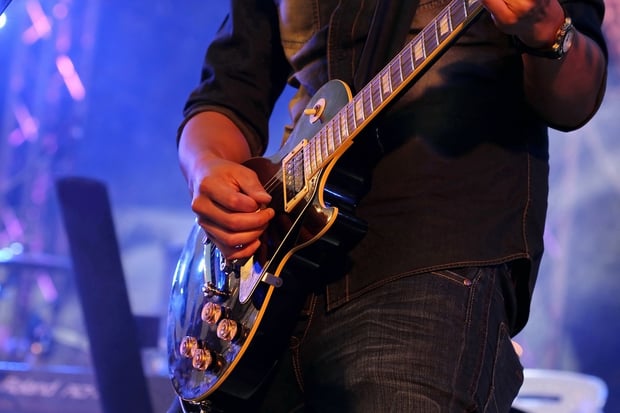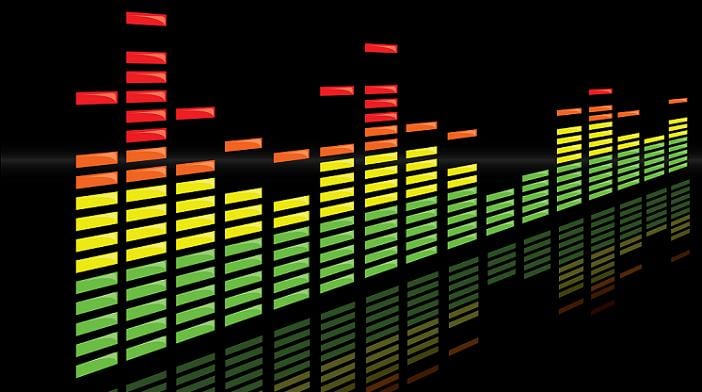 Image via Shutterstock
Image via Shutterstock
"I never take solos,” says the hipster guitarist. “Everything’s already been said.” Well, there are lots of times when a solo isn’t needed or isn’t appropriate. There are bands that don’t take solos, and there are bands that just assume every song will have one. But the great work of past players shouldn’t stop you from taking a guitar solo; it should inspire you.
If an amazing guitarist walks onstage or into your practice space, you can recognize that ability in just a few licks. But why? What’s the difference between adequate, tasteful lead work and the powerful playing of a great soloist? Here are some of the key differences to listen for, and to try to incorporate into your own playing.
1. Use space
One of the biggest differences between lead and rhythm? Silence. Rhythm guitar tracks usually give you a very steady pulse. When playing lead over that, contrast by letting the notes hang. If you listen to dozens of great leads, how often does the solo begin with a single, soulful note that sustains over a few bars? Starting sparsely also gives you a chance to feel the groove and plan what’s next, especially if you’re playing an improvised solo.
Even better, a lower note density at the start of the solo gives you the opportunity to build excitement and speed as you travel through the solo. If you start with some brutally fast, speaker-shredding run on the first bar, you’d better be ready to sustain and even build on that level of intensity throughout, or the solo will feel anticlimactic.
2. Play over changes
A great guitarist commands the instrument the way a great singer commands her voice. In the course of singing a song, melodic interest is created by singing over changes, often with interesting passing tones that carry over from verse to chorus. You can find those passing tones (notes that sound good over both chord progressions) on guitar and use them to your melodic advantage.
Solos are like songs within songs, and as such, they're a lot more interesting if they carry over through a verse, a chorus, and a short chordal turnaround than when they’re only played over one section of the song. This doesn’t mean a solo has to be long, just that the band can grind through a couple changes while the solo is taking place. This increases your note palette for the solo, adding different intervals and note ranges to keep things sounding fresh and unpredictable.
3. Create an iconic tone
Unlike great singers, who are usually recognizable after three or four syllables, great guitarists often change tones song by song. And why not? Manufacturers are always giving them gear for endorsements, and they have racks of guitars at their disposal. The common element in great solo tones, however, is attention to detail. Somewhere in the math equation of fingers, guitar, amplifier, and pedals is a sweet sum that finds every element working in concert.
The missing ingredient in your tone could be revealed with a flick of your pickup selector switch, turning a reverb pedal knob to two o’clock, or rolling off some of the high EQ on an amp. When you find that sound, remember it. Write it down. Or take a picture of your row of pedals with all the right settings. And don’t worry if it sounds similar to another guitarist – you’ll be playing your own songs with your own fingers, so the result will be unique and sound awesome.
4. Incorporate non-note material
If the solo you’re playing was transcribed as tablature, how often would notes need to be included to explain some bizarre sound that sheet music wouldn’t cover? Tabs might include parenthetical explanations like “(presses strings against bridge pickup)”, or “(slides guitar pick down wound strings to the nut)”. There are endless possibilities of non-notes you can play, and this is one of the ways we can play our guitars in “vocalese.”
Singers incorporate all sorts of non-notes in their performances: snorts, laughs, breath sounds, kissy sounds, and growls. Great guitarists achieve a similar variety of noises on the guitar, using mutes, pick slides, bending notes right off the fretboard, and the “slurp” of sweep-picking three or four muted strings.
5. Use complete sentences
Like chess players, great soloists are thinking several moves ahead. They use phrases that resolve over several measures. Less great guitarists tend to be more shortsighted, playing a large number of busy phrases that start and end quickly. Think about a politician delivering a speech, or a minister preaching a sermon. Great orators and great soloists use pace, phrasing, and intensity to achieve an emotional impact. They set up the listener, building anticipation, and then bring the matter to a conclusion by powerfully resolving the composition.
This takes patience and timing, along with a plan of the note or notes in the solo’s final phrase. If you know where you're going, you can approach that point once, then twice, and then finally achieve that resolution. That’s some of the stuff that a great solo is made of.
Jesse Sterling Harrison is an author, recording artist, and part-time farmer. He lives in Massachusetts with his wife, three daughters, and a herd of ducks.







